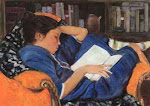 From Tots to Teens, StarMag, 27th January 2008
From Tots to Teens, StarMag, 27th January 2008By DAPHNE LEE
THE MYSTERIOUS EDGE OF THE HEROIC WORLD
By E. L. Konigsburg
Publisher: Atheneum, 244 pages
(ISBN: 978-1416949725)
MOST of the time, coincidences are simply an accidental concurrence of events linked in one way or another.
But what of coincidences that bring people together? In E.M. Forster’s A Room with a View, George Emerson says that it’s fate that causes people to be “flung together” and “drawn apart”.
But Mr Beebe the clergyman insists that it is often common interests, purposes or backgrounds that bring people naturally together. Yes, the old birds of a feather theory.
It’s not immediately obvious what Amadeo Kaplan, William Wilcox and Aida Lily Tull have in common that would cause their paths to cross.
The first is a 12-year-old, newly moved to Florida from New York. His secret wish is to make a discovery: he wishes to find something that has remained hidden for so long that no one remembers it or realises it ever existed – and he longs to share that wish with a friend.
William Wilcox is aloof, given to long silences, so self-assured he inspires “awe and fear or both”. Amadeo recognises him from school and is surprised when, one day, William gets off the school bus at his stop. It turns out that William is headed for Mrs Zander’s house. And Mrs Zander is Amadeo’s neighbour and was once Aida Lily Tull, heiress and opera diva.
Amadeo, William and Aida are characters in The Mysterious Edge of the Heroic World, the latest novel by E.L. Konigsburg.
Like many of Konigsburg’s characters, they are slightly odd (eccentric, if you will). Amadeo and William are pre-teens who speak like wise (if slightly pompous) old men. Both are only sons, close to their mothers, drawn to Aida, a flamboyant, fabulous woman who likes spectacular outfits, champagne (served in crystal flutes, if you please!) and princess phones.
William is helping his mother, a liquidator, prepare the contents of Aida’s home to be sold off, as Aida is moving into a retirement home.
Amadeo is fascinated by Aida and her house, which, unlike his mother’s tastefully, professionally decorated home, is choc-a-bloc with things both precious and kitschy. He senses that this is where he might make his discovery and persuades William to allow him to help sort through Aida’s stuff.
Of course, Amadeo does make a discovery – in fact, he makes several, not least about love and life, human nature and friendship.
William and Aida open up new worlds to Amadeo, exposing him to unexpected and unusual situations and provoking reactions and emotions that are amazing, surprising and disturbing.
Each experience gives Amadeo fresh insights into himself and his intentions and, finally, plays a part in shaping the action he takes when he finds a sketch of a woman drawn by Amadeo Modigliani, an artist whose work was labelled degenerate by the Nazis during World War II.
The Modigliani is the point at which the long and winding roads walked on by Konigsburg’s various characters converge, but Amadeo’s discovery is not something that no one remembers, but something that haunts the memories and conscience of a number of people.
However, more than simply recovering a lost object and work of art, he helps restore lost dreams and dignity.
The author writes in her usual straightforward style, but her characters are complex, mysterious and secretive, and their actions and motives are unclear, even to themselves.
One might see The Mysterious Edge of the Heroic World as a simple but moving story about a boy who gets what he wishes for, but a deeper reading reveals a tale about the profound effect art has on the human spirit, how the past affects the present in ways unimaginable and fantastic, and how beauty can provoke the greatest kindness as well as the most incredible cruelty.
In the end, it is the common desire to set things right as well as the shared belief in the truth and life-changing possibilities of great art that brings Konigsburg’s characters together.
Konigsburg is a two-time winner of the Newberry Medal, for From the Mixed-Up Files of Mrs. Basil E. Frankweiler (1967) and The View from Saturday (1997).
For a complete list of her books go to this site.
